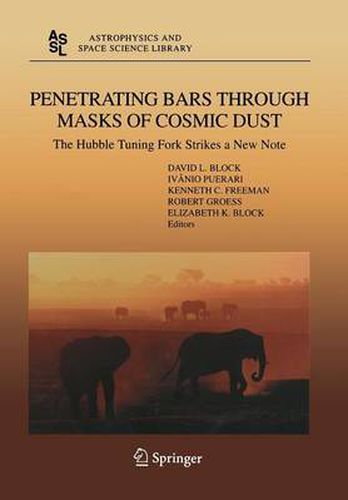Penetrating Bars through Masks of Cosmic Dust: The Hubble Tuning Fork strikes a New Note

Penetrating Bars through Masks of Cosmic Dust: The Hubble Tuning Fork strikes a New Note
This title is printed to order. This book may have been self-published. If so, we cannot guarantee the quality of the content. In the main most books will have gone through the editing process however some may not. We therefore suggest that you be aware of this before ordering this book. If in doubt check either the author or publisher’s details as we are unable to accept any returns unless they are faulty. Please contact us if you have any questions.
THE EDITORS: DAVID L. BLOCK AND KENNETH C. FREEMAN (SOC CO-CHAIRS), IVANIO PUERARI, ROBERT GROESS AND LIZ K. BLOCK 1. Harvard College Observatory, 1958 The past century has truly brought about an explosive period of growth and discovery for the physical sciences as a whole, and for astronomy in particular. Galaxy morphology has reached a renaissance . . The year: 1958. The date: October 1. The venue: Harvard College Observatory. The lecturer: Walter Baade. With amazing foresight, Baade penned these words: Young stars, supergiants and so on, make a terrific splash - lots of light. The total mass of these can be very small compared to the total mass of the system . Dr Layzer then asked the key question:
… the discussion raises the point of what this classification would look like if you were to ignore completely all the Population I, and just focus attention on the Population II …
We stand on the shoulders of giants. The great observer E. E. Barnard, in his pioneering efforts to photograph the Milky Way, devoted the major part of his life to identifying and numbering dusty holes and dust lanes in our Milky Way. No one could have dreamt that the pervasiveness of these cosmic dust masks (not only in our Galaxy but also in galaxies at high redshift) is so great, that their penetration is truly one of the pioneering challenges from both space-borne telescopes and from the ground.
This item is not currently in-stock. It can be ordered online and is expected to ship in 7-14 days
Our stock data is updated periodically, and availability may change throughout the day for in-demand items. Please call the relevant shop for the most current stock information. Prices are subject to change without notice.
Sign in or become a Readings Member to add this title to a wishlist.

